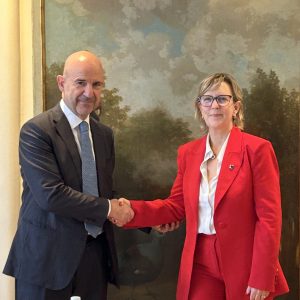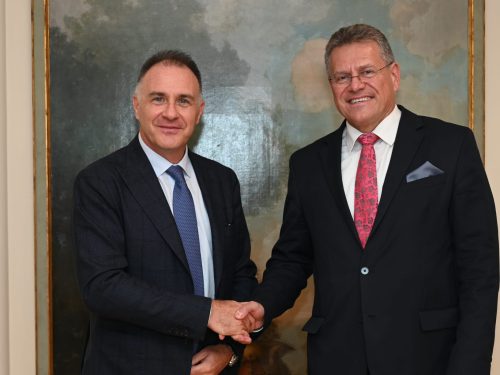News
Share on
Six years after the first study, Confindustria presented to the European Parliament in Brussels the second Circular Economy Reportconfirming the three key guidelines for a successful transitionbreaking down non-technological barriers, promoting the exchange of circular goods and products and further enhancing the country's plant capacity.
The paper offers an integrated analysis, examining the topic of the circular economy not only from a strictly environmental point of view, but also of industrial policycovering strategic topics such as energy, transport, logistics, infrastructure and public procurement.
A focus special is dedicated to the best practices adopted by Italian companies. These experiences testify to the Italian industry's ongoing commitment to circularity, covering areas such as the bio-economy, decarbonisation and integration of transport with circular models. This heritage of know-how shows how the paradigm of circularity, in our country, is declined in different ways, adapting to the peculiarities of the various sectors.
In this Report, Confindustria proposes ten strategic recommendations which reflect the demands of industry and aim to steer the new European regulatory framework on the circular economy, which will be reflected in the forthcoming Circular Economy Act:
- Promoting full harmonisation and simplification of the copious regulation European circular economycoordinating the new regulations with the existing framework, avoiding unnecessary duplication of bureaucratic and economic burdens.
- Simplify the waste management authorisation procedures and ensure regulatory stability.
- Remove critical issues on the permitting environmental, also for attracting investment and fostering innovation. A study by BusinessEurope pointed out that 83% of companies consider the length of authorisation procedures to be one of the main obstacles to investment in Europe.
- Streamlining key legal institutions for the circular economysuch as by-products and the so-called. end of wastewhich still prove incapable of adequately supporting an efficient and competitive circular transition, due to bureaucratic bottlenecks and an unclear regulatory framework.
- Support research and innovationkey elements to improve technologies for the valorisation of waste and recovered materials, simplifying the requirements for experimentation and the use of materials obtained in research projects, and clarifying, with appropriate regulation, the end-of-life of materials produced by pilot plants.
- Developing and coordinating incentive measures and interventionsto promote the development of the circular economy and support the market for circular products and products made from renewable raw materials, including through green public procurement and dedicated economic, financial and fiscal instruments. Introduce a system of certificates to enhance the circular economy e incentivising the use of secondary raw materials (MPS), while promoting price signals that reflect their cheapness compared to virgin raw materials. To achieve this, it would be useful to determine the "circular energy efficiency certificates" that, through a sound scientific approach, determines the energy savings and reduction of greenhouse gas emissions resulting from the use of MPS instead of primary raw materials in production processes. This mechanism provides that the party placing MPS on the market, in relation to their actual use, receives certificates stating their value in terms of tonnes of oil equivalent (toe) or CO2 avoided. These certificates could be used within existing mechanisms, such as energy efficiency certificates or CO2both compulsory and voluntary.
- Strengthen the role of public procurement in the promotion of circularity.
- Coordinate the policies of energy transition with those for thecircular economy. Promoting a more rational use of resources also impacts on the promotion of renewable energies, as well as on energy efficiency policies, which are also central to the logistics and transport sectors
- Allocating resources adequate to enable the industry to meet the targets already set by European regulations, which have so far proven to be lacking in terms of funding, both public and private. Leverage appears decisive, both with regard to compliance with the new regulations and as a target for the next strategywhich, in line with the recommendations of the Draghi Report, should also be geared towards building infrastructure for the circular economy.
- Creating synergies between sustainability e security in the supply of raw materials.
Confindustria reiterates the value of the circular economy, not only for environmental sustainability, but also as a strategic lever for the country's competitiveness and industrial independence. With the new Report, which highlights the excellent performance of the association system, hopes to overcome the existing criticalities for a full transition to a sustainable and competitive production model.
To read the full report: https://www.confindustria.it//home/policy/position-paper/dettaglio/rapporto-economia-circolare




















